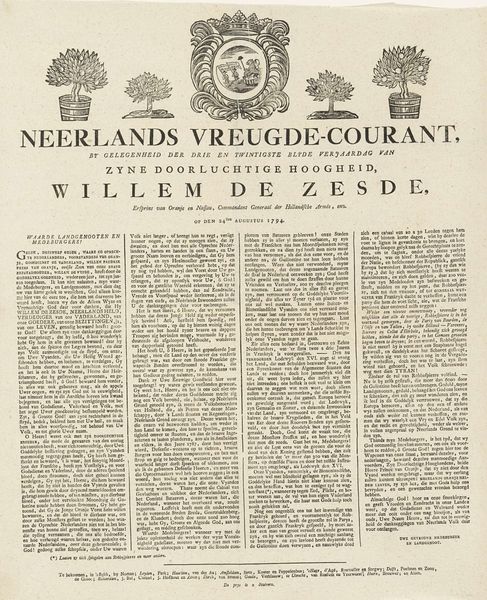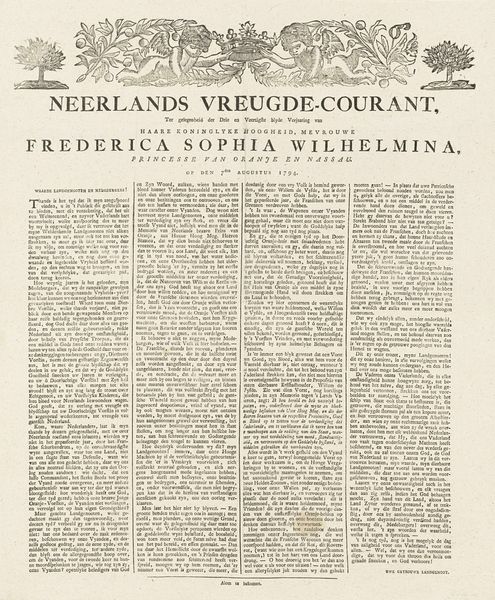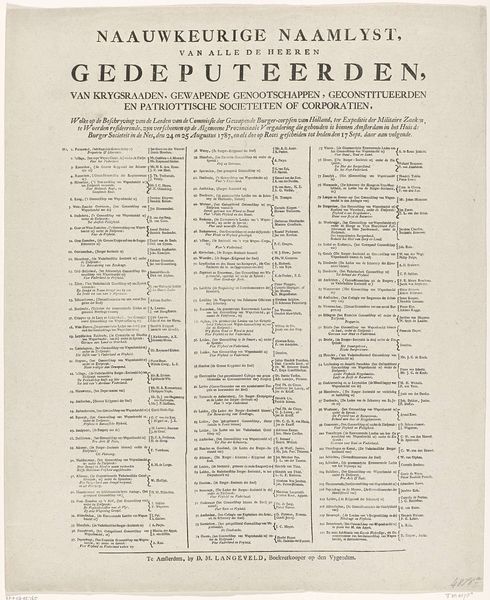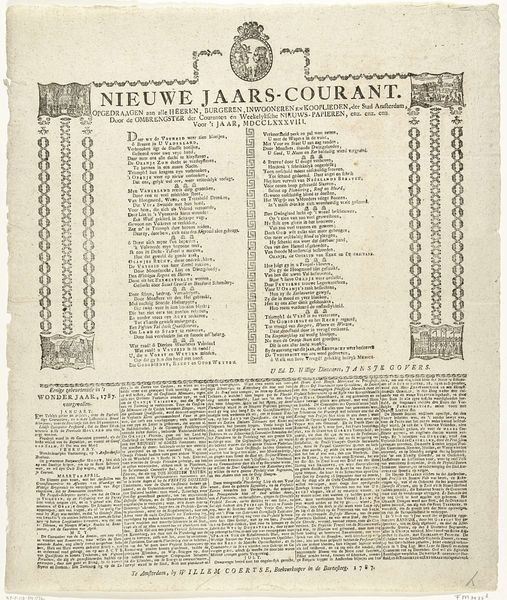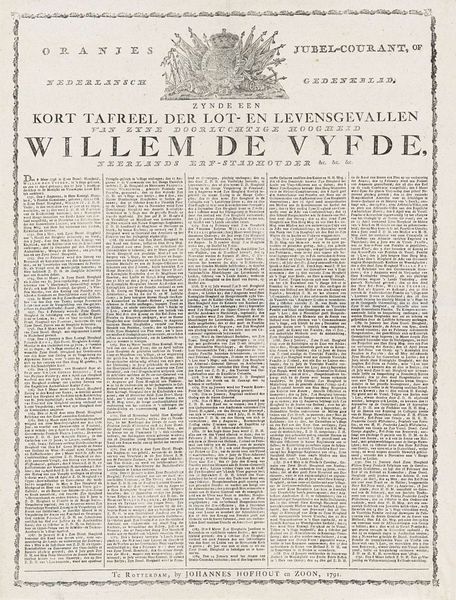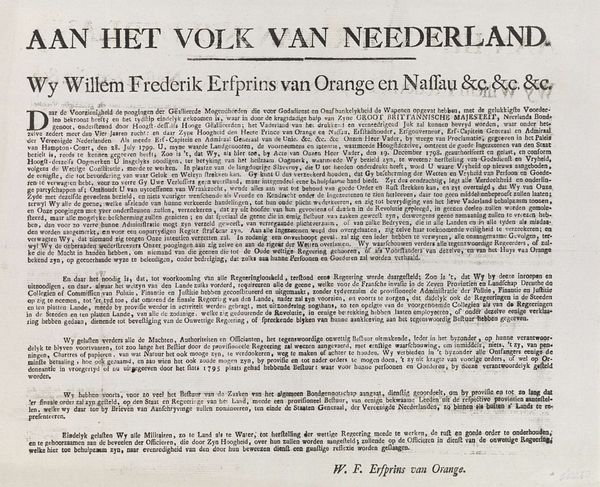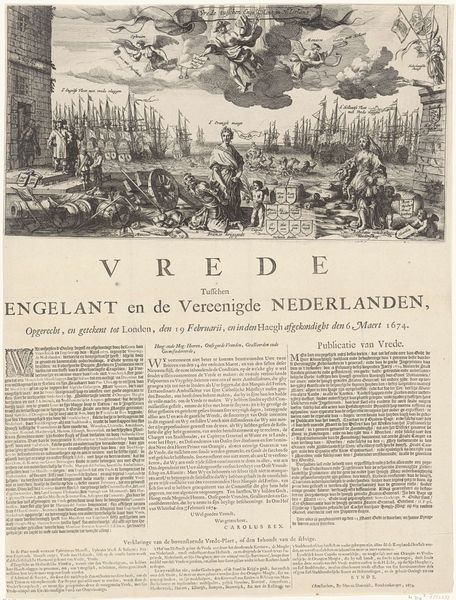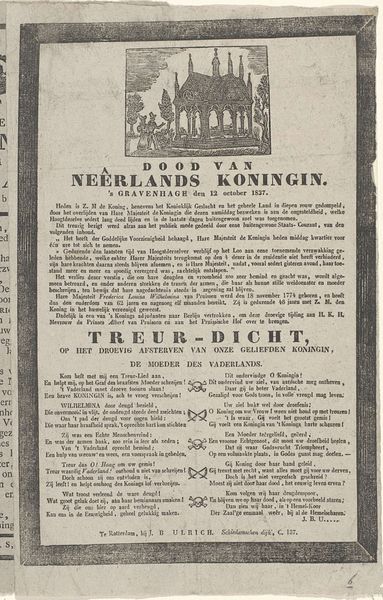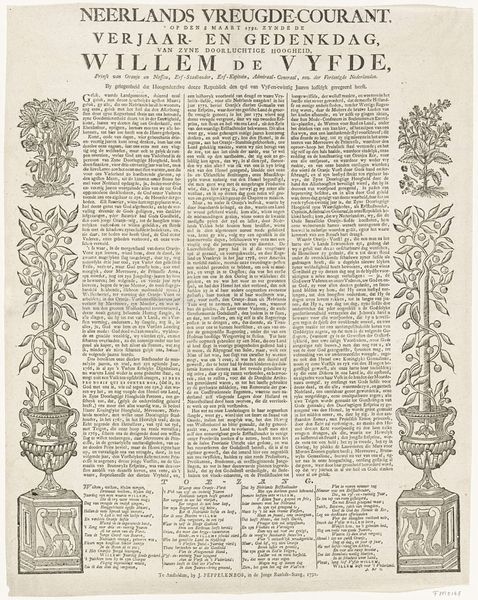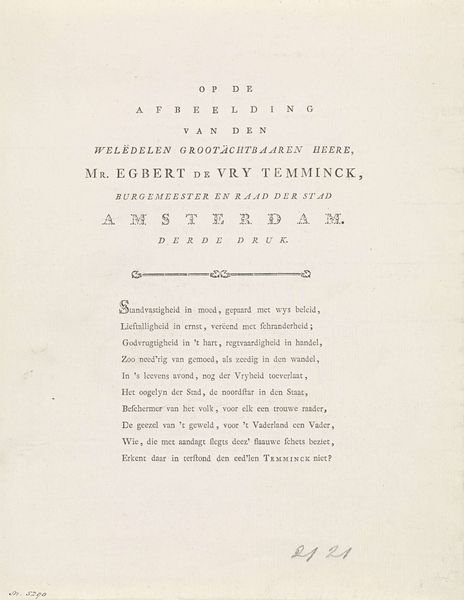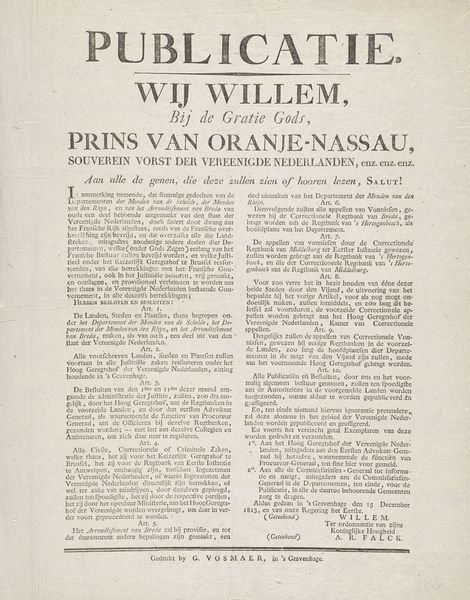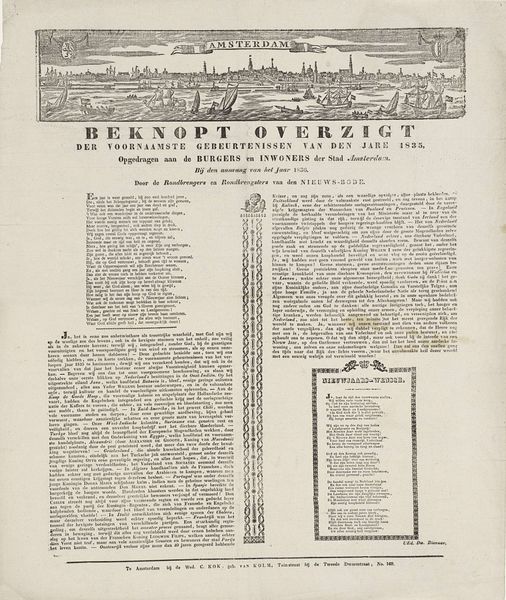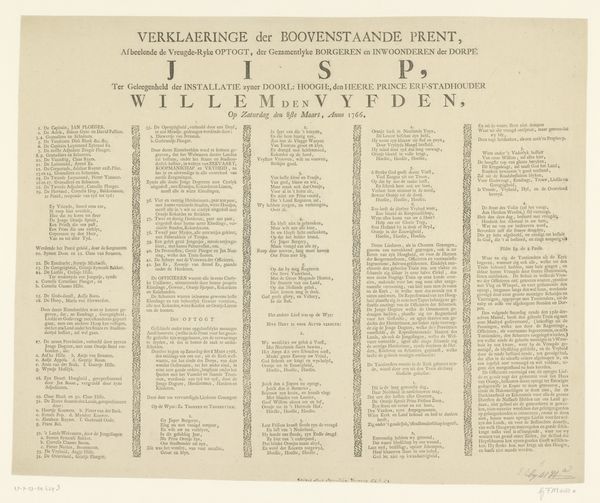
Vreugdecourant bij zilveren huwelijk van de prins en prinses van Oranje, 1792 Possibly 1792
0:00
0:00
print, paper, typography
#
portrait
#
neoclacissism
#
dutch-golden-age
# print
#
paper
#
typography
#
history-painting
#
calligraphy
Dimensions: height 510 mm, width 430 mm
Copyright: Rijks Museum: Open Domain
Curator: Here we have a print from possibly 1792, titled "Vreugdecourant bij zilveren huwelijk van de prins en prinses van Oranje," created by J. Peppelenbos. It appears to commemorate the silver wedding anniversary of Prince William V and Princess Wilhelmina. Editor: It strikes me immediately as a rather busy composition, dense with text. The typography, while intricate, makes it hard to decipher at a glance. It's dominated by a somewhat rigid symmetry. Curator: Indeed. Consider this piece within the sociopolitical landscape of the late 18th century. The House of Orange faced growing challenges to its authority. These celebratory prints reinforced loyalty and portrayed an image of stability, very similar to history paintings, but reproduced on paper. Editor: So it's not merely a record, but a conscious effort in statecraft. The portraits at the top—circular, almost like coins—reinforce their status and likeness across society. They give a classical vibe due to its Neoclassical style. And is that a weeping willow uniting their images? Curator: Very perceptive! It symbolizes resilience and enduring love but consider the context, though; some interpret it representing mourning during unstable times. Also observe the typography functioning as calligraphy. It blends artistic form and political messaging. The language used aims to evoke specific emotional responses, guiding public opinion during this anniversary. Editor: The choice of paper, printmaking, typography…the materiality aligns perfectly. Each line and shape, however minute, reinforces the total effect—not just informative but persuasive. Did everyday folk understand the nuanced text? Curator: Many could understand parts and interpret the celebratory intent. This document can inform our comprehension of social conditions of the time, the ways identities were represented, and ways in which public opinion was deliberately influenced. Editor: Looking closely reveals its fascinating complexities beyond the purely representational; a matrix of symbolism, craft, and intent intertwined. Curator: Absolutely. Analyzing it has further illuminated how artifacts such as these act as crucial bridges to understanding the past.
Comments
No comments
Be the first to comment and join the conversation on the ultimate creative platform.
